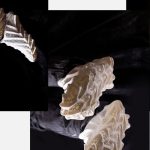Exploring grinding technology of cemented carbide diesThe processing of cemented carbide dies can be achieved by techniques such as grinding and electric corrosion. A detailed understanding of grinding technology can better manufacture workpieces and reduce defects in the processing process. Next, let us walk into the processing and grinding technology of cemented carbide molds and unveil its mystery..(1) Grinding wheel selection: Grinding wheels are required for the grinding of cemented carbide molds. The rough grinding mainly considers the processing efficiency. The particle size of diamond grinding wheels can be selected from 140#~170#; for fine grinding, the processing of alloy molds should be considered. For dimensional tolerance and shape tolerance, the particle size of diamond grinding wheel can be selected from 170# to 200#; for polishing, the surface roughness is mainly considered, the particle size of diamond grinding wheel can be selected from 270# to 325#, and the surface requirements can be selected from W32 to W40 Granular diamond grinding wheel, self-made polishing paste(2) Grinding: In the process of grinding cemented carbide molds, choose a diamond wheel of a suitable size. If there is no suitable size, you can make a non-standard grinding wheel. According to the clamping needs of the grinder, a qualified fixed shaft of the grinding wheel is processed, and then phosphoric acid and copper oxide are mixed uniformly and used as a bonding agent, which is evenly coated on the joint surface of the substrate and the grinding wheel. After the bonding is completed, let it stand still for a period of time. After solidification, slowly heat the joint surface with fire to make the bonding uniform and firm. Let it cool naturally, and leave it for 24 hours before use.
(3) Selection of cutting fluid: The cutting fluid for grinding cemented carbide molds can be a commercially available special emulsion, or sodium nitrite solution. Use sodium nitrite solution, dissolve commercially available sodium nitrite into tap water, and mix into sodium nitrite solution. The disadvantage of using sodium nitrite solution is that traces of alkali white are easily left on the surface of tungsten steel mold workpieces. The removal method is grinding Clean and dry the surface of the workpiece in time after finishing; the disadvantage of using a special emulsion is that a large amount of foam will be generated during the grinding process, and it is difficult to observe the grinding process. Each has its advantages and disadvantages.
Link to this article:Exploring grinding technology of cemented carbide dies
Reprint Statement: If there are no special instructions, all articles on this site are original. Please indicate the source for reprinting:Tungusten,Thanks!^^

